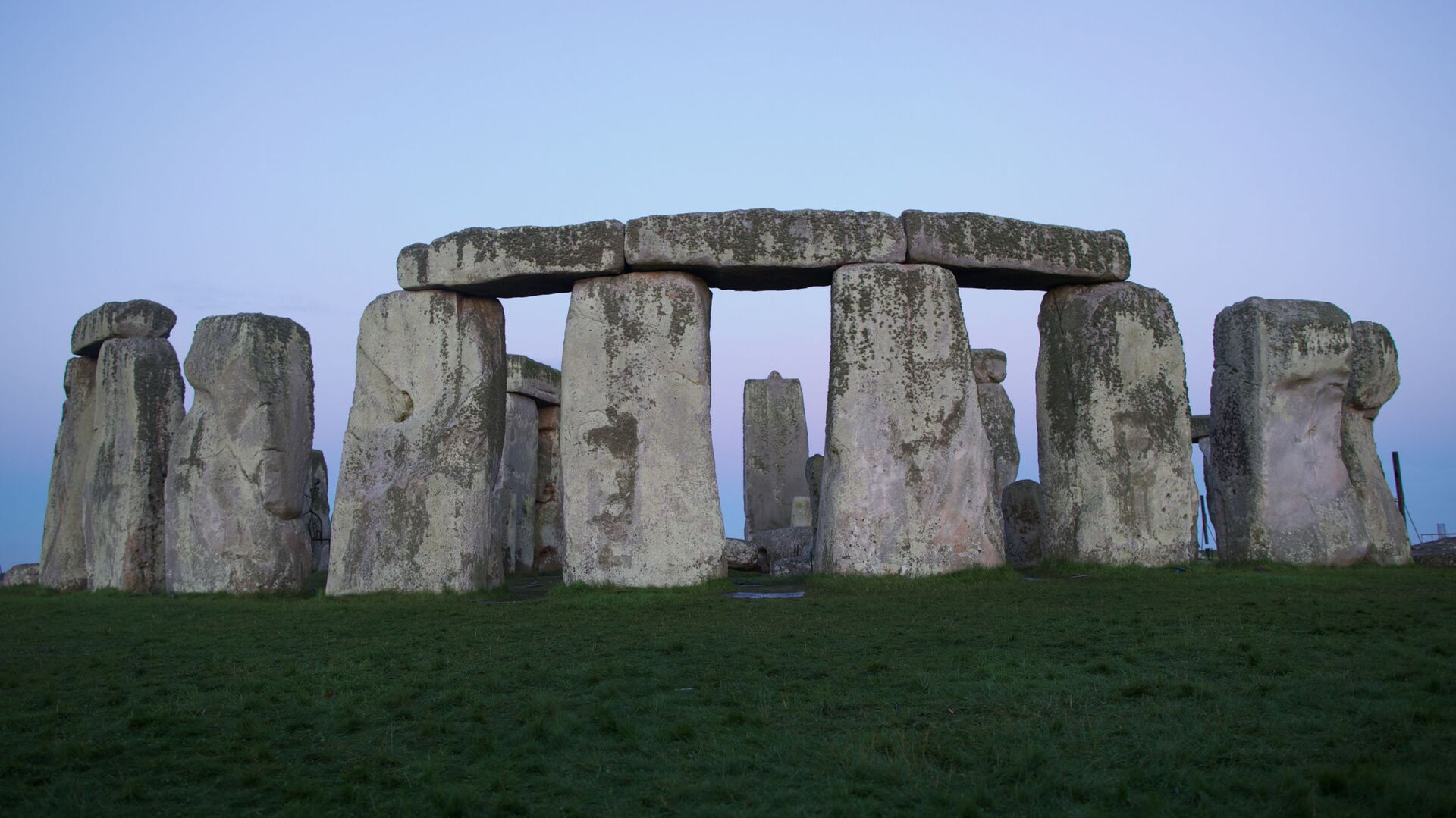https://sputnikglobe.com/20220513/mysterious-pits-discovered-near-stonehenge-appear-to-be-man-made-study-says-1095497540.html
Mysterious Pits Discovered Near Stonehenge Appear to Be Man-Made, Study Says
Mysterious Pits Discovered Near Stonehenge Appear to Be Man-Made, Study Says
Sputnik International
Despite the years that scientists spent studying the origin of Stonehenge, one of the most cryptic English sites still remains surrounded by mysteries. 13.05.2022, Sputnik International
2022-05-13T18:50+0000
2022-05-13T18:50+0000
2022-05-13T18:50+0000
science & tech
stonehenge
https://cdn1.img.sputnikglobe.com/img/106803/17/1068031774_0:251:2751:1798_1920x0_80_0_0_1f7377fd6010437fe427a61461704973.jpg
An archaeological "biopsy" of Stonehenge revealed that there are several mysterious pits around the stone circle, and scientists suggest those could be man-made.The examination of Stonehenge was conducted by researchers from the University of Birmingham and Ghent University in Belgium. The research involved the combination of various geological techniques such as "the first extensive electromagnetic induction survey, 20 targeted archaeological excavations, and computer-generated analyses of thousands of subsurface features".Scientists have discovered more than 400 such pits around Stonehenge, each of them over 2 meters wide. The purpose of these pits, believed to be made by humans, was not immediately known. The researchers suggested that they could be used for "utilitarian functions" as well as somehow linked to the "long-term ceremonial structuring" of Stonehedge.The pits range in date from the Early Mesolithic (c.8000 BCE) to the Middle Bronze Age (c.1300 BCE). "From early Holocene hunter-gatherers to later Bronze Age inhabitants of farms and field systems, the archaeology we’re detecting is the result of complex and ever-changing occupation of the landscape," noted Paul Garwood, Senior Lecturer in Prehistory at the University of Birmingham.
Sputnik International
feedback@sputniknews.com
+74956456601
MIA „Rossiya Segodnya“
2022
Sputnik International
feedback@sputniknews.com
+74956456601
MIA „Rossiya Segodnya“
News
en_EN
Sputnik International
feedback@sputniknews.com
+74956456601
MIA „Rossiya Segodnya“
Sputnik International
feedback@sputniknews.com
+74956456601
MIA „Rossiya Segodnya“
science & tech, stonehenge
science & tech, stonehenge
Mysterious Pits Discovered Near Stonehenge Appear to Be Man-Made, Study Says
Despite the years that scientists spent studying the origin of Stonehenge, one of the most cryptic English sites still remains surrounded by mysteries.
An archaeological "biopsy" of Stonehenge revealed that there are several mysterious pits around the stone circle, and scientists suggest those could be man-made.
The examination of Stonehenge was
conducted by researchers from the University of Birmingham and Ghent University in Belgium. The research involved the combination of various geological techniques such as "the first extensive electromagnetic induction survey, 20 targeted archaeological excavations, and computer-generated analyses of thousands of subsurface features".
Scientists have discovered more than 400 such pits around Stonehenge, each of them over 2 meters wide. The purpose of these pits, believed to be made by humans, was not immediately known. The researchers suggested that they could be used for "utilitarian functions" as well as somehow linked to the "long-term ceremonial structuring" of Stonehedge.
“By combining new geophysical survey techniques with coring, and pinpoint excavation, the team has revealed some of the earliest evidence of human activity yet unearthed in the Stonehenge landscape. The discovery of the largest known Early Mesolithic pit in northwest Europe shows that this was a special place for hunter-gatherer communities thousands of years before the first stones were erected," said Dr Nick Snashall, Archaeologist for the Stonehenge & Avebury World Heritage Site.
The pits range in date from the Early Mesolithic (c.8000 BCE) to the Middle Bronze Age (c.1300 BCE).
"From early Holocene hunter-gatherers to later Bronze Age inhabitants of farms and field systems, the archaeology we’re detecting is the result of complex and ever-changing occupation of the landscape," noted Paul Garwood, Senior Lecturer in Prehistory at the University of Birmingham.

